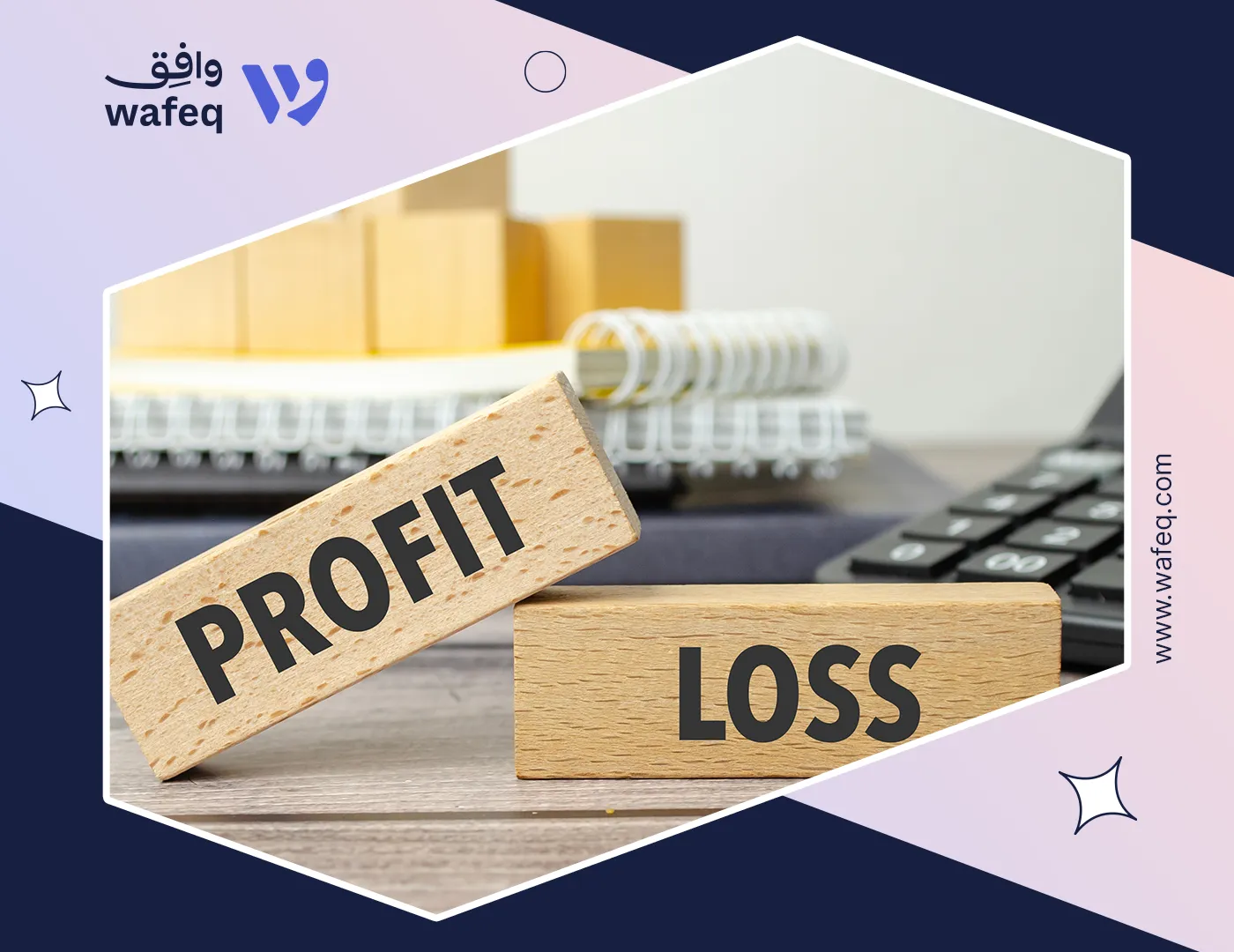Understanding Internal Rate of Return (IRR) in Finance
 واستخداماته في التحليل المالي.png?alt=media)
Have you ever wondered how investors decide whether a project or investment is worth the risk? The Internal Rate of Return (IRR) is one of the most powerful financial tools to answer that question. By calculating the rate at which an investment breaks even in present value terms, IRR helps businesses, financial managers, and individual investors assess the profitability of projects and compare opportunities. Understanding IRR sharpens investment decisions and reveals the hidden impact of time and cash flow on returns.
In this article, we’ll explore what IRR means, how it differs from other key financial metrics like ROI and discount rate, and how to calculate it in practice. You’ll also see how changes in discount rates influence decisions, common mistakes to avoid, and how accounting software like Wafeq can make financial analysis simpler and more accurate.
What is the Internal Rate of Return (IRR)?
The Internal Rate of Return (IRR) is a financial metric used to estimate the profitability of potential investments. Technically, it is the discount rate at which the net present value (NPV) of all future cash flows from an investment equals zero. In simpler terms, IRR tells you the rate of return an investment is expected to generate over its lifetime. For example, if a project has an IRR of 15%, it means that the project is expected to generate an annual return of 15% on the invested capital, provided that assumptions about cash flows hold.
IRR is widely used in capital budgeting, project evaluation, and corporate finance because it allows businesses to compare multiple investment opportunities on the same scale.
Why is IRR Important in Finance and Investment Decisions?
The Internal Rate of Return (IRR) is more than just a percentage—it is a decision-making tool. Investors, business owners, and financial managers use IRR to evaluate whether a project, investment, or acquisition will create value. Its importance comes from its ability to summarize complex financial data into a single rate of return, making it easier to compare opportunities.
Here are some key reasons why IRR is important:
- Investment evaluation: IRR helps determine if an investment meets or exceeds the company’s required rate of return (also known as the hurdle rate). If the IRR is higher than the hurdle rate, the project is usually considered attractive.
- Capital budgeting: Companies often have limited resources. IRR helps managers prioritize projects that generate the highest returns.
- Comparability: By converting potential profits into a percentage, IRR allows businesses to compare projects of different sizes and durations.
- Risk assessment: A higher IRR generally indicates a more profitable and potentially less risky investment, although other factors must still be considered.
- Strategic decision-making: IRR is used in merger and acquisition analysis, new product launches, and long-term expansion planning.
IRR provides a benchmark for answering the most critical question: Is this investment worth it?
IRR provides a benchmark for answering the most critical question: Is this investment worth it?
How to Calculate IRR (Step-by-Step with Example)
The Internal Rate of Return (IRR) is calculated as the discount rate where the investment's Net Present Value (NPV) equals zero. In practice, IRR cannot usually be solved algebraically, so it is found using trial-and-error, financial calculators, or software like Excel.
The formula for NPV:
The formula for NPV:
NPV = Present Value of Cash Inflows – Initial Investment
Where:
- C1, C2 … Cn = Cash inflows at different periods
- C0 = Initial investment (cash outflow)
- r = Discount rate (to solve for IRR)
- n = Number of periods
Net present value can be calculated as follows:
NPV = (Cash Inflow1 / (1 + r)^1) + (Cash Inflow2 / (1 + r)^2) + ... + (Cash Inflow n / (1 + r)^n) – Initial Investment
IRR Step-by-Step Calculation Method:
- List all expected cash inflows and outflows of the investment.
- Apply the NPV formula using different discount rates.
- Adjust the discount rate until the NPV becomes zero (or very close to zero).
- The rate at which this happens is the IRR.
Example:
Example:
Suppose a company invests 100,000 SAR today and expects the following cash inflows over 3 years:
Year 1: 40,000 SAR
Year 2: 50,000 SAR
Year 3: 60,000 SAR
We test different discount rates:
- At 10%, NPV = +24,868 SAR
- At 20%, NPV = –3,358 SAR
Since the NPV crosses zero between 10% and 20%, we interpolate to find the IRR ≈ 18%.
This means the project is expected to generate an annual return of around 18% on the investment.
IRR vs Discount Rate and Required Rate of Return
Many professionals confuse the Internal Rate of Return (IRR) with the discount rate or the required rate of return, but each plays a different role in financial decision-making.
Internal Rate of Return (IRR): This is the rate at which the investment's Net Present Value (NPV) equals zero. It reflects the investment’s expected profitability.
Discount Rate: This is the rate used to calculate the present value of future cash flows. It can be based on the cost of capital, inflation, or opportunity cost.
Required Rate of Return (RRR): This is the minimum acceptable return an investor or company expects before committing to an investment. It is often set as the “hurdle rate.”
Key Difference:
Key Difference:
IRR is calculated from the project’s cash flows, while the Discount rate and RRR are assumed or chosen before the investment.
The Effect of a Change in the Discount Rate on IRR-Based Decisions
The Internal Rate of Return (IRR) itself does not change when the discount rate changes, because IRR is calculated purely from the project’s cash flows. However, the decision to accept or reject a project based on IRR depends heavily on the chosen discount rate or required rate of return.
- If the discount rate (or required rate of return) is lower than the IRR, the project will be considered profitable.
- If the discount rate is higher than the IRR, the project will likely be rejected because it cannot meet the minimum return required.
Example:
Example:
A project has an IRR of 14%.
- The project will be attractive if the company’s required return is 10%.
- The project will no longer qualify if the required return rises to 16% (perhaps due to higher borrowing costs or market risks), This shows that while IRR is fixed, changes in the prevailing discount rate influence the investment decision by shifting the benchmark for acceptance.
Discount Rate in NPV: Why It Matters
The discount rate is one of the most critical inputs in the Net Present Value (NPV) method. It reflects the opportunity cost of capital—what you could earn by investing in an alternative project with similar risk.
- If the discount rate is set too low, future cash flows appear more valuable, and projects may look more attractive than they actually are.
- If the discount rate is set too high, future cash flows shrink in present value terms, and even profitable projects might appear unviable.
What Is the Discount Rate?
The discount rate represents the required rate of return an investor expects, or the cost of capital a company uses when evaluating a project. It converts future cash flows into their present value, helping businesses determine whether an investment will generate positive value.
Key Reasons Why the Discount Rate Matters in NPV:
- It accounts for the time value of money.
- It reflects the risk level of the investment.
- It ensures that returns are compared to a meaningful benchmark.
- It directly affects whether NPV is positive (accept project) or negative (reject project).
Choosing the Right Discount Rate
The right discount rate depends on the risk level and type of investment:
- Company’s Weighted Average Cost of Capital (WACC) – commonly used for business projects.
- Required Rate of Return (RRR) – used by investors for personal or portfolio decisions.
- Risk-Adjusted Rate – higher for risky projects, lower for stable investments.
How Discount Rate Affects NPV and IRR

IRR vs ROI (Return on Investment)
Although the Internal Rate of Return (IRR) and Return on Investment (ROI) measure profitability, they answer different questions and are used in various contexts.
.png?alt=media)
Example:
Example:
Investment of 100,000 SAR returns 120,000 SAR:
After 1 year: ROI = 20%, IRR ≈ 20%
After 3 years: ROI = 20%, IRR ≈ 6.3%
When IRR Can Mislead?
While IRR is a powerful tool, it is not without flaws. Relying solely on IRR can sometimes mislead decision-makers. Here are the key limitations:
- Multiple IRRs The IRR equation may produce multiple solutions if a project has non-conventional cash flows (i.e., cash flows change signs more than once, from positive to negative and back). This creates confusion, as different IRRs suggest different decisions.
- Unrealistic Reinvestment Assumption IRR assumes that all interim cash flows are reinvested at the same IRR, which is often unrealistic. In practice, reinvestment is more accurately assumed at the cost of capital.
- Not Reliable for Comparing Projects of Different Scales A small project with a very high IRR may look more attractive than a large project with a slightly lower IRR, even if the larger project creates more absolute value.
- Ignores Project Duration IRR does not explicitly account for project length. A short-term project with a high IRR may be less valuable than a long-term project with a lower IRR but higher total cash inflows.
- Conflict with Net Present Value (NPV) In some cases, IRR and NPV may give conflicting recommendations. Financial professionals often prefer NPV as the primary measure and use IRR as a supporting indicator.
Modified Internal Rate of Return (MIRR)
Because of IRR limitations, financial professionals often use the Modified Internal Rate of Return (MIRR) as an improved alternative.
What is MIRR?
The MIRR adjusts the assumptions of the traditional IRR by:
- Assuming reinvestment at the cost of capital (or a specified reinvestment rate) rather than at the IRR itself.
- Providing a single, unique solution, even in cases where IRR produces multiple values.
This makes MIRR a more realistic and reliable measure for evaluating investment projects.
Formula for MIRR:
Formula for MIRR:
MIRR = (FV_inflows / PV_outflows)^(1 / n) - 1
Where:
- FV_inflows = Future value of positive cash inflows, reinvested at the reinvestment rate.
- PV_outflows = Present value of cash outflows, discounted at the finance rate (cost of capital)
- n = Number of periods
Advantages of MIRR
In practice, MIRR is often considered more accurate than IRR, but IRR remains more popular due to its simplicity.
- Solves the multiple IRR problem.
- Provides a more realistic reinvestment assumption.
- Easier to compare projects of different scales and durations.
- Aligns more closely with the company’s actual cost of capital.
Calculating the Modified Internal Rate of Return (MIRR)
Example:
Example:
Let’s assume the following investment details:
Initial investment (outflow): SAR 100,000
Annual inflows over 3 years:
Year 1: SAR 40,000
Year 2: SAR 50,000
Year 3: SAR 60,000
Finance rate (cost of capital): 10%
Reinvestment rate: 12%
- Step 1: Calculate PV of Outflows Since the initial investment occurs at the start, its present value (PV) equals SAR 100,000. Step 2: Calculate FV of Inflows We compound each inflow to the end of Year 3 using the reinvestment rate (12%): Year 1 inflow: 40,000 × (1.12)² = SAR 50,176 Year 2 inflow: 50,000 × (1.12)¹ = SAR 56,000 Year 3 inflow: 60,000 × (1.12)⁰ = SAR 60,000 Total FV of inflows = SAR 166,176
- Step 3: Apply the MIRR Formula MIRR = (FV_inflows / PV_outflows)^(1 / n) - 1 MIRR = (166,176 / 100,000)^(1 / 3) - 1 MIRR = (1.66176)^(0.3333) - 1 MIRR = 0.1829 or 18.29% Result: The Modified Internal Rate of Return (MIRR) is 18.29%, meaning the project earns an effective return of 18.29% when accounting for realistic reinvestment assumptions.
Use Wafeq - an accounting system to keep track of debits and credits, manage your inventory, payroll, and more.
Use Wafeq - an accounting system to keep track of debits and credits, manage your inventory, payroll, and more.
Also Read: Cost Competitiveness In Business: How To Win The Race.
The Internal Rate of Return (IRR) remains one of the most powerful tools in financial decision-making. It goes beyond a simple profitability indicator — it helps companies evaluate how efficiently capital is used and how quickly an investment pays back relative to its cost of funds. When used correctly, IRR allows businesses to compare investment opportunities consistently, align project decisions with corporate financial goals, and understand the time value of money and its impact on project feasibility.
FAQs about Internal Rate of Return (IRR)
What does the Internal Rate of Return (IRR) tell us?
The IRR shows the annualized growth rate an investment is expected to generate. In other words, it tells investors the profitability and efficiency of a project based on its cash inflows and outflows.
What is a good IRR value?
A “good” IRR depends on the company’s cost of capital and the investment’s risk.
- If IRR > Cost of Capital → The project adds value and should be accepted.
- If IRR < Cost of Capital → The project destroys value and should be rejected.
For many businesses, an IRR of 15–25% is often considered strong, depending on the industry and market.
What is the difference between IRR and ROI?
IRR considers the time value of money and all cash flows over time. ROI simply measures total return as a percentage of the initial investment, without considering when the returns occur. Thus, IRR provides a more accurate financial assessment, especially for long-term projects.
How do I calculate IRR in Excel?
Use the built-in =IRR() function. Example: If your cash flows are in cells A1:A5 (with A1 being the initial investment as a negative number), the formula would be: =IRR(A1:A5) You can also specify a “guess” rate, like: =IRR(A1:A5, 0.1) → where 0.1 = 10% initial guess.
What happens if a project has multiple IRRs?
This occurs when cash flows change signs more than once (positive to negative and back). In this case, the traditional IRR becomes ambiguous. The solution is to use MIRR (Modified Internal Rate of Return), which provides a single, reliable rate.
Can IRR be negative?
Yes — if the investment’s cash inflows are less than the initial outlay, the IRR will be negative, indicating a loss rather than a return.
Is IRR the same as the discount rate?
No. The discount rate is an input used to calculate NPV, while the IRR is the rate at which NPV = 0.
So, IRR is derived from the discount rate relationship, not the same thing.
When should I use IRR?
Use IRR when:
- You need to compare multiple projects of similar scale.
- You want to measure the project’s growth potential over time.
- You need a metric that reflects both profitability and the timing of cash flows.
Smart financial management starts with reliable accounting tools. The Accounting Program Wafeq helps track performance, automate calculations, and generate clear, compliant reports.
Smart financial management starts with reliable accounting tools. The Accounting Program Wafeq helps track performance, automate calculations, and generate clear, compliant reports.




.png?alt=media)









